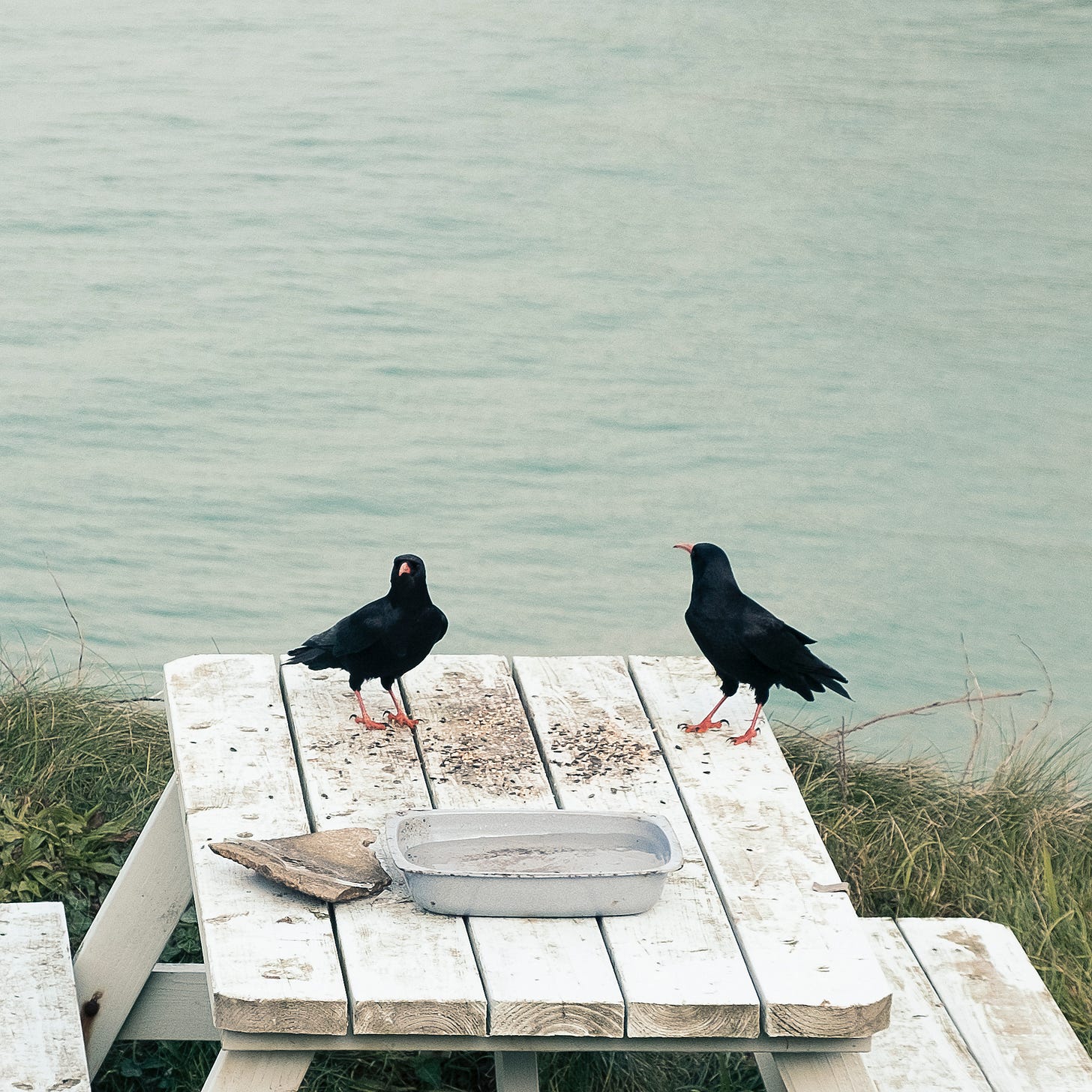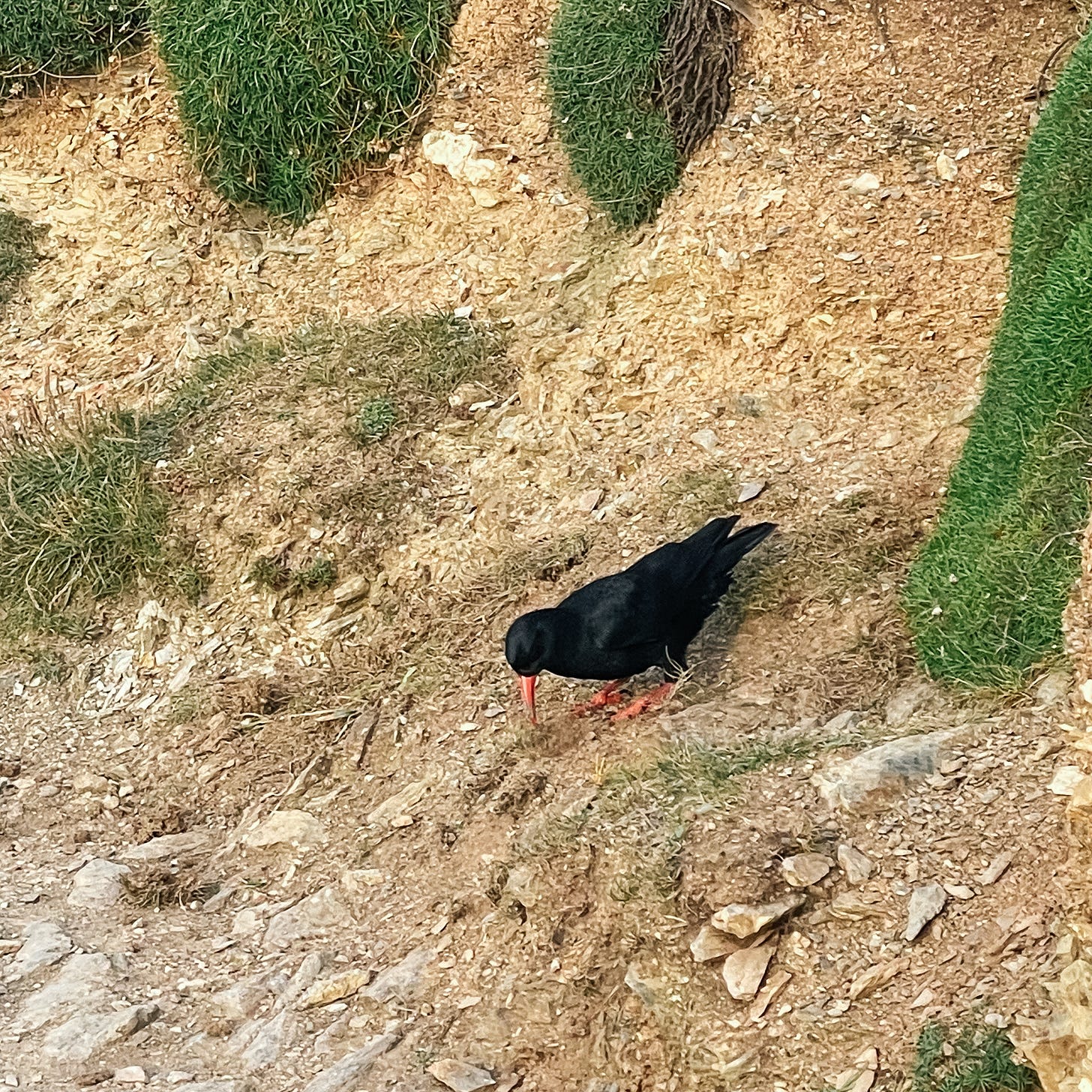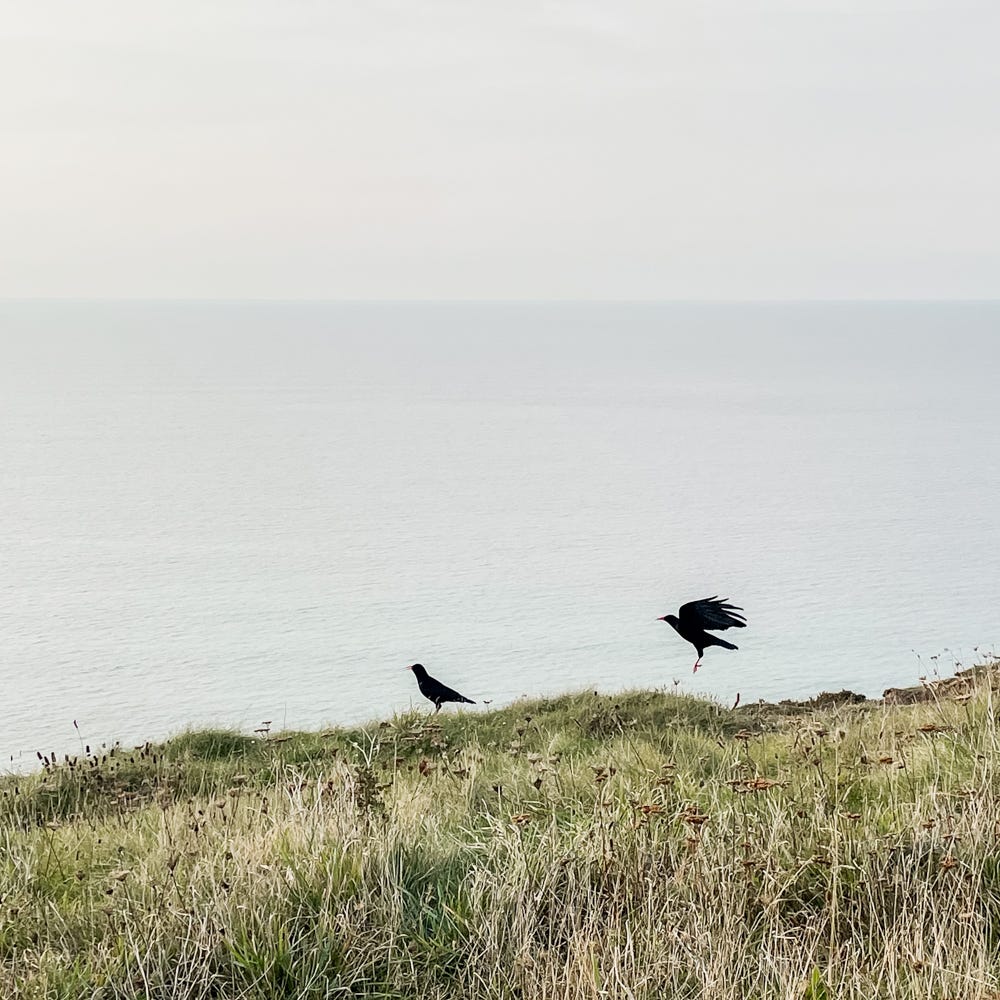The wind grabbed my shoulders while the gorse tugged at my laces and clawed at my legs. But I wouldn’t be held back. I was on a chough chase.
They had arrowed over my left shoulder. Five in formation against the gusting north-easterly, their cry announcing their arrival.
It’s become a call and response: they shout “chee-ow”, I shout “chough” and instantly scan the sky for the jet-black bird with the red legs and bill.
In recent years a pair have made themselves at home along this mile-and-a-half stretch of the North Cornwall coast where gorse and heather give way to the moonscape of the old Wheal Charlotte copper and tin mine between Porthtowan and Chapel Porth.
This summer the family doubled in size, the pair becoming one of 23 to breed successfully in the county, producing 66 choughlets.1
A fifth member then joined our flock and, just a few weeks ago, unperturbed by walkers and their dogs, they squabbled over the best grubs and bugs in the loose earth at the side of the coast path.
Choughs had vanished from these parts 40 years ago as cliff grazing went out of fashion and their habitat became too overgrown, but Cornwall’s national bird is back and happy for us to know it.
Like a big-time footballer returning to their hometown club – chests puffed out and with a swagger – they know they are a fan favourite in these parts.
But this time they were playing hard to get and the thrill of the chase gave way to disappointment. Three more times I heard “chee-ow” above the hiss of the sea and the rush of the wind, but it was only as I turned inland towards home that two paused briefly alongside me at head height. A flash of those red stockings and they were gone again.
Originally written in November 2021 for The Urban Birder’s nature writing course, led by Stephen Moss, and published in the Western Morning News Country Notebook.
These were the 2021 figures. Last year, 2022, was even more successful, with 25 pairs raising more than 70 choughlets, according to the Cornish Chough Conservation Network.






